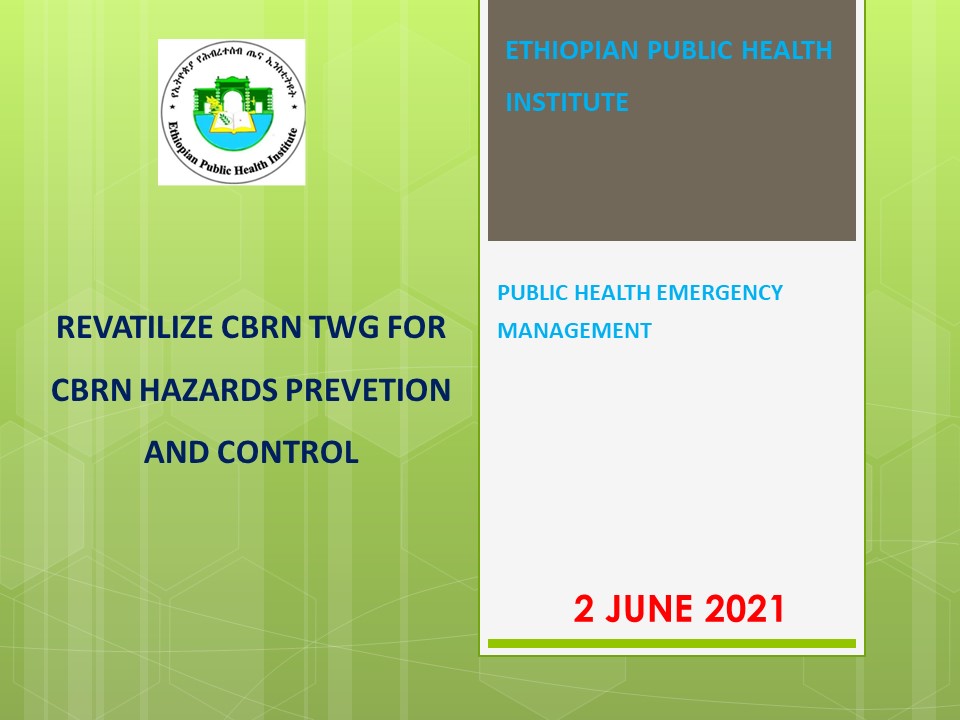
September 2021
Read how the multi-stakeholder Ethiopian CBRN Technical Working Group is bouncing back.
With support from PHE, the CBRN Hazards Case Team at the Ethiopian Public Health Institute completed a thorough stakeholder mapping and engagement exercise in 2018, which resulted in the establishment of a multi-sectoral stakeholder CBRN Technical Working Group in 2019. The overarching aim of the working group is to collaborate on actions to prevent, detect and respond to both intentional and accidental chemical, biological and radiological incidents. Its membership comprises 25 stakeholders including the Ministries of Health, Agriculture, Industry, Environment and Labour, to name but a few.
In 2020 the work of the CBRN Technical Working Group was largely put on hold as many of its members joined national and international efforts to respond to the Covid-19 pandemic. However, on 2nd June 2021 EPHI called an extraordinary meeting of the group to reconvene the members and to re-establish the agreements supporting the working group, including a Memorandum of Understanding. The group will now continue to meet monthly on an ongoing basis and is prepared to continue work towards agreeing detection and response arrangements to facilitate coordinated management of chemical, biological and radiological incidents.
The meeting precedes a weeklong workshop planned by EPHI to work with its regional staff to discuss the finalisation of the EPHI CBRN Surveillance and Response Guideline, which will be launched in the coming months.
Mesfin Wossen, Acting Director of the Diseases and Health Events Surveillance and Response Directorate said:
“Chemical, biological and radiological events cannot be handled by one agency alone. It was vital that we reinvigorated the CBRN Technical Working Group to continue our work towards improving our capacities in these areas. The members of the group understand that we are better together in this respect, and we are pleased to have this forum to continue our work together”.
Lydia Izon-Cooper, from the Centre for Radiation Chemical and Environmental Hazards at Public Health England and who leads the partnership work with the CBRN Hazards Case Team at EPHI, says:
“EPHI has made significant strides towards improving its chemical events capacity and the CBRN Technical Working Group is an excellent example of how stakeholders can work together to achieve collaborative objectives. The reinvigoration of the group ahead of the finalisation of the CBRN Surveillance and Response Guideline is timely as we are all keen that the guideline will see Ethiopia move towards coordinated action on these events”.

